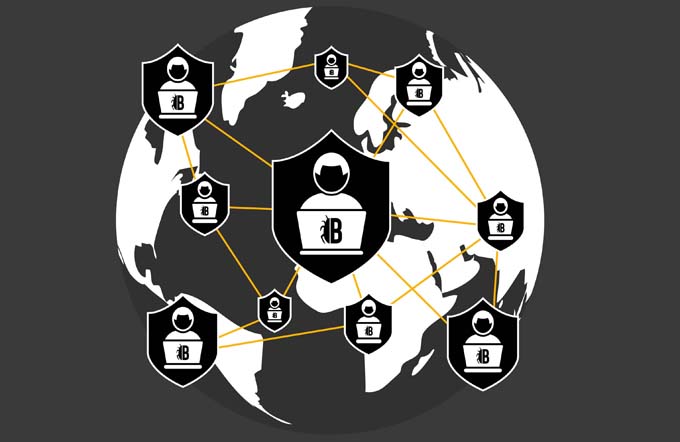Energy efficiency in manufacturing
In the medium term, manufacturing companies will be forced to record and evaluate their data in production in order to be able to make suitable decisions to reduce their energy consumption. MES solutions lay the foundation for this: They record the energy data and provide the necessary evaluations.

According to a survey by the Fraunhofer Institute for Systems and Innovation Research (ISI), just under half of the manufacturing sector sees potential energy savings of over 10 percent in the production environment. The public sector has also taken measures to motivate manufacturing companies to save energy. The framework for this is an energy management system in accordance with DIN EN ISO 50001.
Saving energy pays off
Energy costs have risen considerably in recent years. It is not only private households that are feeling the effects. Electricity prices for industry, for example, have more than doubled since 2000. Furthermore, energy is a decisive image factor. Issues that relate directly or indirectly to energy are increasingly in the news, such as the oil spill in the Gulf of Mexico or the nuclear disaster in Fukushima. End consumers are thus becoming more aware of environmental and climate protection issues. Companies are consequently becoming active in reducing costs through energy savings and creating a positive image among their customers.
Energy consumption put to the test
In the future, production companies will have to reckon with additional cost increases. In Germany, for example, the Renewable Energies Act (EEG) requires grid operators to preferentially feed more expensive electricity from renewable energies into the grid. In order to provide electricity suppliers with a means of compensation, the EEG levy was introduced, on the basis of which they can pass on the costs to the consumer. Up to now, there have been concessions for the producing industry. From 2013, however, these will be tied to the existence of an energy management system in accordance with DIN EN ISO 50001, as will the tax concessions under the Energy Tax Act. Companies will thus be virtually obliged to actively save energy.
DIN EN ISO 50001 shows the way
An energy management system is intended to support companies in systematically and sustainably reducing energy consumption. The DIN EN ISO 50001 standard has replaced DIN EN 16001 and describes the requirements for a modern energy management system designed in accordance with legal requirements.
DIN EN ISO 50001 describes a control loop according to the Plan- Do-Check-Act principle. After the definition of a company's own energy policy and the associated planning (Plan), implementation takes place in ongoing operations (Do). Continuous checks with analyses and audits (Check) first lead to certification, which is then reviewed annually. The corrective and improvement measures resulting from the audit must be implemented (Act). This is followed by the planning phase - the control loop takes effect again and a continuous improvement process (CIP) is set in motion in the company.
Support through MES
In order to implement the control loop in practice with reasonable effort, effective support from IT systems is required. Manufacturing Execution Systems (MES) are an ideal platform, as they record the necessary information and background for energy wastage and make it openly available.
Transparency and potential
can lay. "From our experience, we know that companies today have many more options for systematically saving energy. The technical prerequisite is provided by an MES: It also creates the necessary transparency from an energy perspective and shows the potential," emphasizes Rainer Deisenroth, sales manager and member of the management board of the Mosbach-based IT company MPDV Mikrolab GmbH. In order to make savings, the right information, such as the exact power consumption of the machines, must first be available. In most cases, only summary data is available. There is a lack of detailed information with which consumption behavior can be specifically analyzed and consumption can actually be reduced.
Many functions of the MES system already contribute indirectly to reducing energy costs. For example, optimized detailed planning saves energy in production. The machines do not run unnecessarily on standby and power consumption without productivity is prevented. Likewise, production can be coordinated to use favorable energy quotas, and additional costs due to threshold overruns are avoided. A reduction in scrap reduces energy consumption through less rework. Reducing idle and throughput times also contributes to energy savings: General costs decrease, such as for heating and lighting.
Help with data collection and analysis
MES systems such as the MES HYDRA from MPDV Mikrolab GmbH are characterized by their diverse capabilities for data acquisition and data analysis. If these capabilities are also applied to the topic of energy, energy data acquisition with the MES can form the basis for an energy management system according to DIN EN ISO 50001. The MES must support both automatic and manual recording of energy consumption: The data from the meters, for example the power consumption of the systems, is transmitted directly to the system or - if this is technically too time-consuming - entered manually by an employee with the support of preconfigured meter reading plans.
The recorded data must be displayed promptly and analyzed individually in order to be able to react quickly in problem situations such as load peaks. A performance and consumption overview is useful here, which visualizes all relevant energy data at a glance. It is also helpful to have a map of the meters so that their respective positions in the departments, halls or plants in the
Energy consumption of machines
to maintain an overview. In MES HYDRA, for example, the so-called graphical machine park is available for this purpose (Fig. 1). This function immediately shows whether and, if so, which department or hall has a particularly high energy consumption, and measures can be initiated in a targeted manner. For example, those responsible can decide to produce on another machine with lower energy consumption as an alternative to a high-consumption machine, or at least to use a different tool.
Locate waste precisely
In this way, energy wasters can be pinpointed with an MES. This also includes not only using pure energy consumption as an evaluation criterion, but other key figures such as energy consumption per unit, which better characterize the behavior of machines and systems. Here, MES have clear advantages over pure energy management systems: They can visualize data that is recorded anyway, such as quantities, material batches or process values, in correlation to energy consumption and thus make the influence of all production parameters recognizable.
A principle known from process monitoring or quality assurance can also be applied to energy management. The recorded data is not only visualized in the form of summed values, but their temporal progression is also shown. If appropriate intervention or tolerance limits are also defined, the current power values can be permanently monitored for compliance with the limits. By visualizing the progressions, trends become clear and those responsible can react very quickly - in principle even before a problem situation occurs. For example, machines in standby or peripheral consumers such as air conditioning systems can be switched off at short notice in the event of load peaks.
Proceed close to production
Thanks to MES solutions, the responsible employees on the shop floor can make the right decisions in a timely manner to eliminate energy waste and thus produce more cost-effectively.
With the Energy Management (EMG) module of its HYDRA MES solution, MPDV Mikrolab GmbH offers an innovative tool that enables manufacturing companies to meet all the requirements placed on a modern energy management system. HYDRA- EMG was designed with the support of the Fraunhofer Institute for Process and Automation Technology (IPA). It supports the control loop according to DIN EN ISO 50001 and helps manufacturing companies to comply with the legal requirements.









